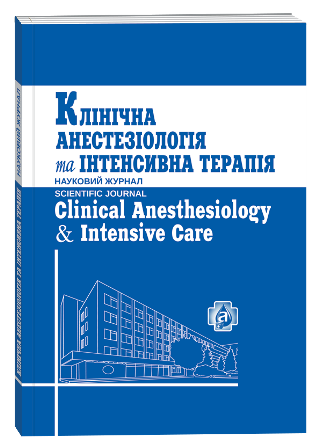DYNAMICS OF CHANGES IN THE HEMOSTATIC SYSTEM IN PATIENTS WITH OBLITERATING ATHEROSCLEROSIS OF THE LOWER EXTREMITIES AGAINST THE USE OF LOW MOLECULAR WEIGHT HEPARIN
DOI:
https://doi.org/10.31379/2411.2616.12.2.7Keywords:
obliterating atherosclerosis, thrombus formation, hemostasisAbstract
Relevance. Patients with peripheral arterial disease have 3- to 5-fold higher mortality risk compared with those without peripheral arterial disease. Increased mortality is mainly driven by a higher cardiovascular disease risk and reflects the underlying systemic atherosclerosis process in peripheral arterial disease patients. Objective of the study. The purpose of this study is to evaluate the functional state of the vascular-platelet, coagulation and fibrinolysis of the hemostasis system and their disorders with the help of low-frequency vibration piezoelectric thromboelastography (NPTEG) in patients with obliterating atherosclerosis of the lower extremities on the background of treatment. Materials and methods. The initial state of the hemostasis system was evaluated in 45 patients undergoing treatment for obliterating atherosclerosis of the lower limbs in the Odessa Regional Clinical Hospital. During surgery and in the postoperative period, patients received anesthesia on the basis of epidural bupivacaine administration, also included enoxaparin 0.4 ml (40,000 anti-Ha IU) 2 times a day subcutaneously in the antero-lateral surface of the abdominal wall from the first postoperative day, for 7 days and pentoxifylline IV in the drip 200 mg twice a day for 7 days. The dynamics of the hemostatic system in this group of patients was assessed with the help of NPTEG on the first day before surgery, and at 3, 5 and 7 postoperative days. Results. Prior to surgery and initiation of treatment in patients with obliterating atherosclerosis of the lower extremities against the background of the activation of the vascular — platelet unit of hemostasis, significant structural and chronometric hypercoagulation with increased thrombin generation and inhibition of fibrinolytic activity of blood was noted. On the background of treatment in the epidural administration of bupivacaine, enoxaparin 0.4 ml (40,000 anti-Xa IU) 2 times a day from the first postoperative day and pentoxifylline IV drip 200 mg twice a day, there were significant changes in the direction of normalization in all components system of hemostasis by the method of NVTEG (p<0.001). Intensive therapy against the background of the systemic pathological process led to the normalization of coagulation units of the hemostasis system in patients with obliterating atherosclerosis. Vascular-platelet and fibrinolytic systems did not achieve normal values within 7 days, but showed a significant tendency to decrease the degree of manifestation of their disorders (p<0.001).
References
Diagnosis and management of lower limb peripheral arterial disease: summary of NICE guidance / J. Layden et al. BMJ. 2012. Vol. 345. P. 47–49. doi: 10.1136/bmj.e4947.
Reliability of the MacArthur scale of subjective social status-Brazilian Longitudinal Study of Adult Health (ELSA-Brasil) / L. Giatti et al. BMC Public Health. 2012. Vol. 12. P. 1096.
Education and home based training for intermittent claudication: functional effects and quality of life / A. Prevost et al. Eur J Prev Cardiol. 2015. Vol. 22. P. 373–379.
2011 ACCF/AHA focused update of the guideline for the management of patients with peripheral artery disease (updating the 2005 guideline) a report of the American College of Cardiology Foundation/ American Heart Association Task Force on Practice Guidelines / T. W. Rooke et al. J Am Coll Cardiol. 2011. Vol. 58. P. 2020–2045.
Can we use the low-frequency piezoelectric tromboelastography for diagnosis coagulation disorders? / O. Tarabrin et al. European Journal of Anaesthesiology. 2013. Vol. 30, suppl. 51. P. 92.







